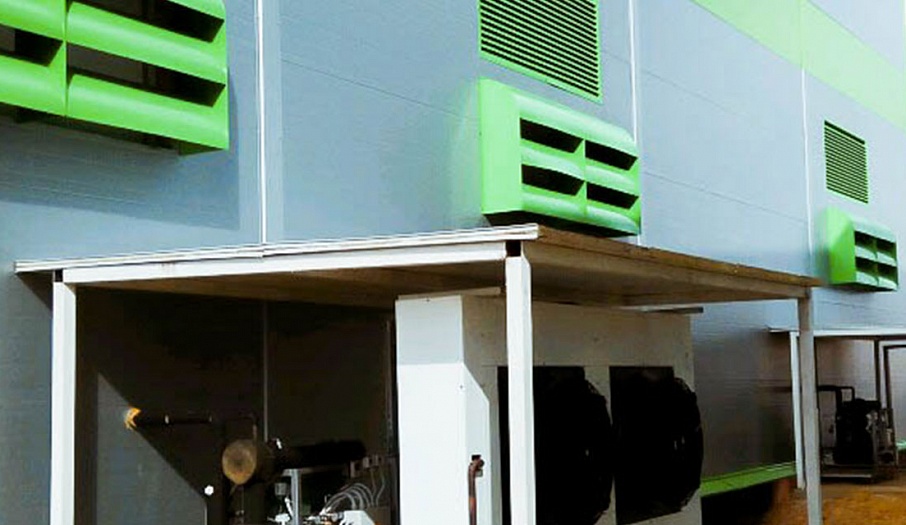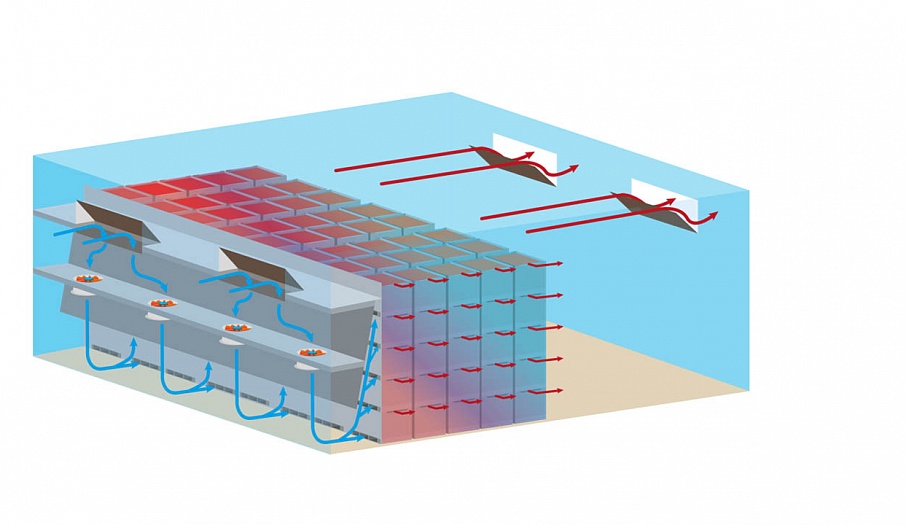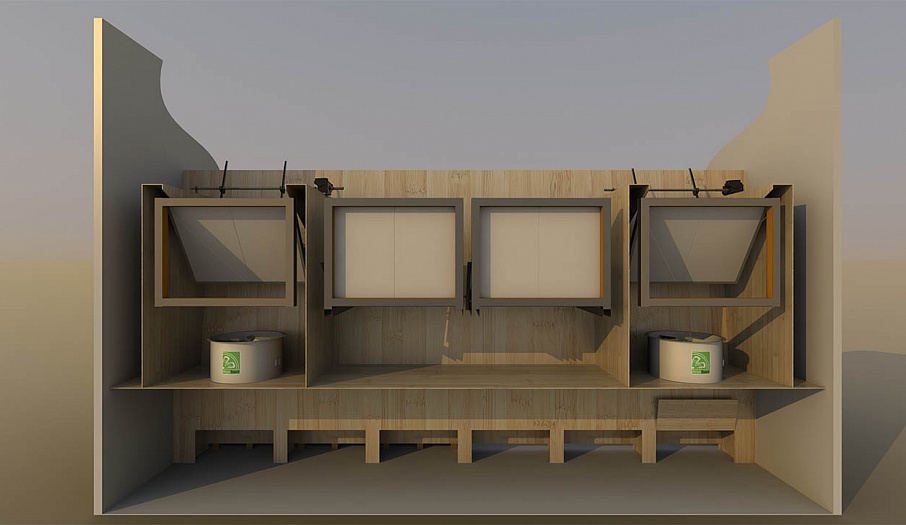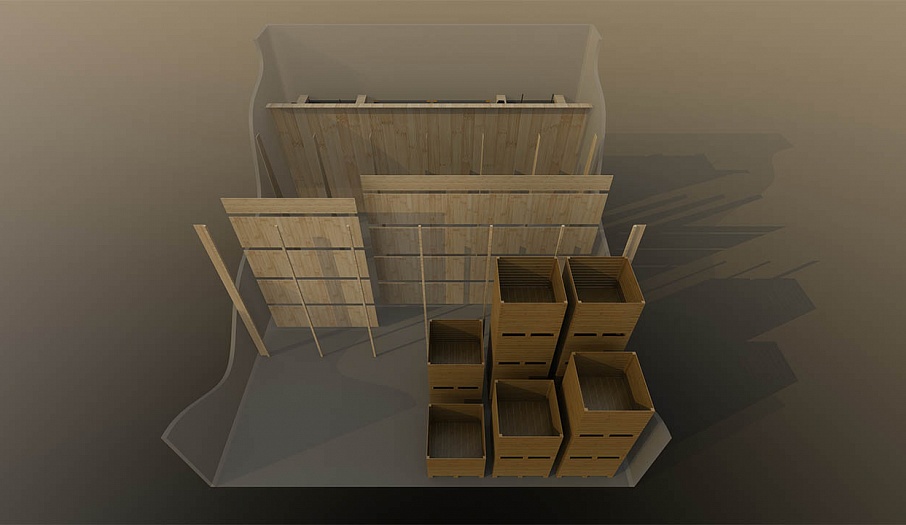Technology
The slotted-wall storage technique is used only for the container storage of vegetables and is one of today’s most effective technologies.
In a storage, there is an air-ventilation chamber separated by a wall where equipment such as fans, intake and emission valves, servomotors, control equipment and sensors is located.
Slotted-wall storage technique
The slotted-wall makes the air circulate through the produce in containers by creating air drag in containers which are positioned closely to the wall with openings for lift-truck forks. It also replaces excessive carbon dioxide (CO2) with fresh air so that produce can be evenly ventilated with slight temperature changes.
.png)
The slotted wall features openings that exactly match the ones found in containers for lift-truck forks. Containers are arranged in a special way, close to the slotted wall. Fans create an air drag that flows through the wall openings and into the containers, flowing through the produce. The front openings of the containers in the end row are covered with control dampers. In this way, the air is forced to flow through the depth of the produce. This technology requires the use of special containers (the standard size of a European vegetable container for the aeration system is 1.6 x 1.2 x 1.2).
The technology is based on the proper selection of equipment and its arrangement in a storage. Depending on the duration of crop storage, a ventilation, refrigeration or humidification system is used. The ventilation system is fundamental and is used for drying, curing, decreasing and maintaining the temperature of produce. A refrigeration system is used when storing at high outer temperatures (in April, May, June) or when the temperature of produce has to be decreased in a short period of time like during crop harvest or while putting carrots and cabbage into storage.
The required storage parameters are maintained with an automatic control system for such processes as ventilation, humidification, refrigeration and heating.
Refrigeration
Refrigeration system is used when storing at high outer temperatures (in April, May, June) or when the temperature of produce has to be decreased in a short period of time like during crop harvest or while putting vegetables into storage.
Artificial air cooling in a storage using a refrigeration system is designed in such a way so as to avoid impacting produce quality and minimize produce crusting and drying.
For this purpose, the system uses air coolers that have been specially designed for the storage of fruits and vegetables. They feature an enlarged heat-exchange finning surface and low air consumption, an enlarged fin pitch and “corridor” pipe pitch in the cooler housing, thereby achieving the lowest-possible “temperature drag.”
The specific arrangement of fans near the entrance to the air cooler provides the air drag into the heat exchanger of the air cooler, which decreases condensate falling onto the surface of the produce and lowers the rate of produce drying. It is extremely important that the minimum temperature drop in air coolers should be less than 6 degrees (Dt6k), that means that the boiling temperature of freon gas should be 6 degrees lower than the temperature in a chamber.
Automation
The required storage parameters are maintained with an automatic control system which was specially designed for vegetable storages.
It provides for the:
- Control of storage modes;
- Control of the refrigeration system;
- Control of the humidification system;
- Control of drying modes;
- Data collection and archiving;
- Monitoring and remote control.
The required storage parameters are maintained with an automatic control system which was specially designed for vegetable storages. The information can be automatically sent from a controller to a PC or smartphone which can be used for the remote monitoring and maintenance of storage parameters.

Recommendations
This type of storage is used when the storage capacity is low but contains a large variety of vegetable sorts (such as seed production).
There are several recommendations concerning the usage of this system:
- The width of a chamber depends on the size of a container. With a standard container (1600x1200x1200mm)
- The length of a chamber should be no more than 15m, 3.5m of which is left in front of the containers for equipment and 2m for a slotted wall.
- The standard height of storage is 5 tiers (6 meters). It is possible to store produce in 6 tiers if there is enough space for containers and equipment.
- Special containers must be used.
- Special dampers must be used for covering the outer openings of containers.
Blog
Storage technology
Rectangular building conveniently
Reconstruction building
Container storage





